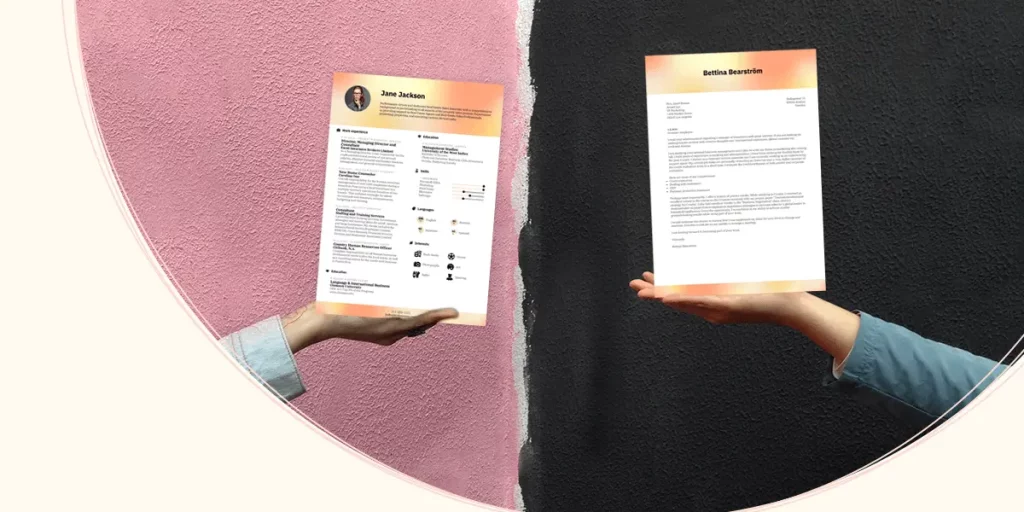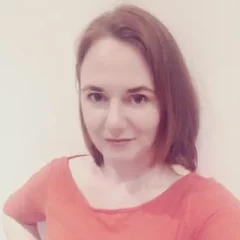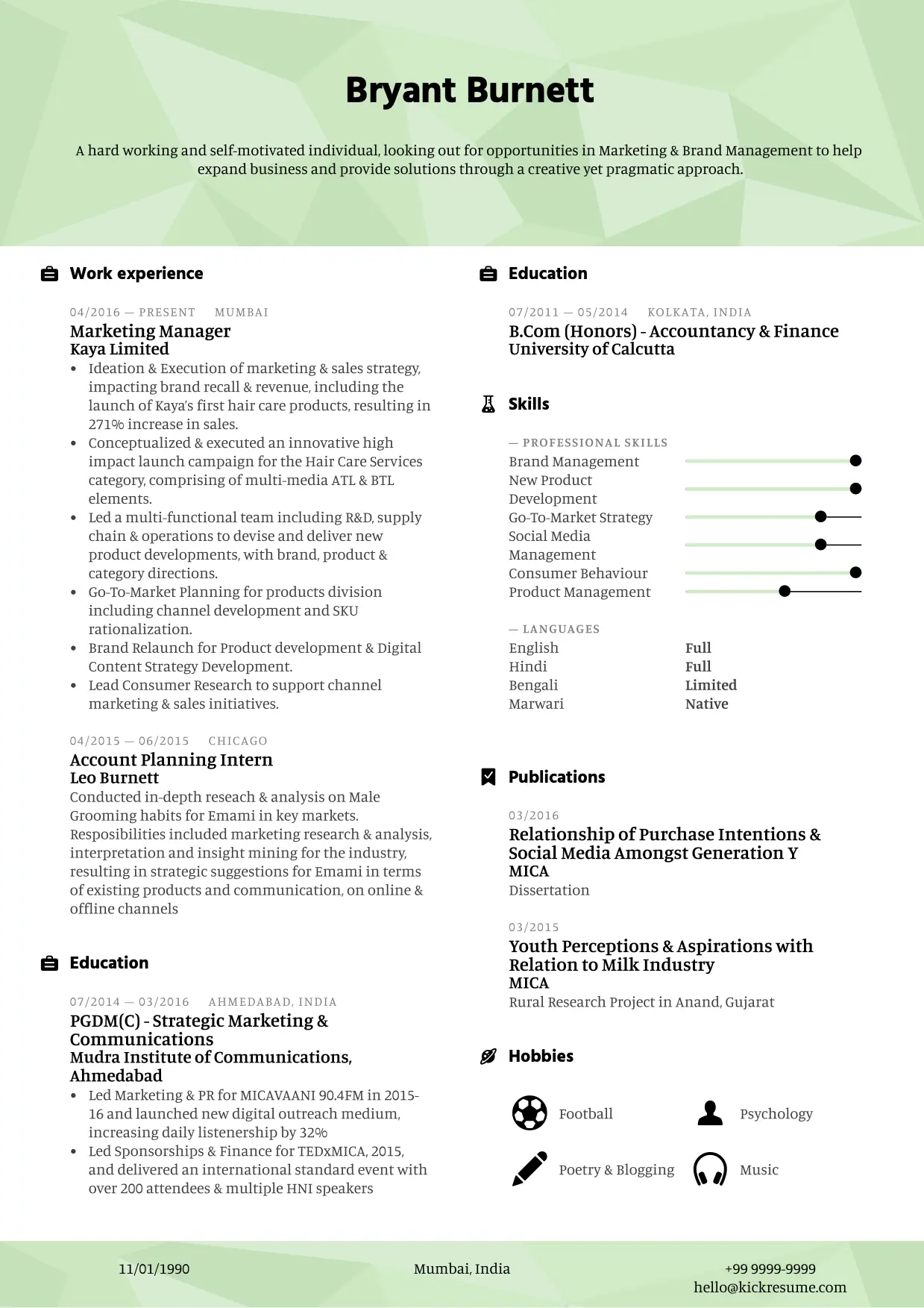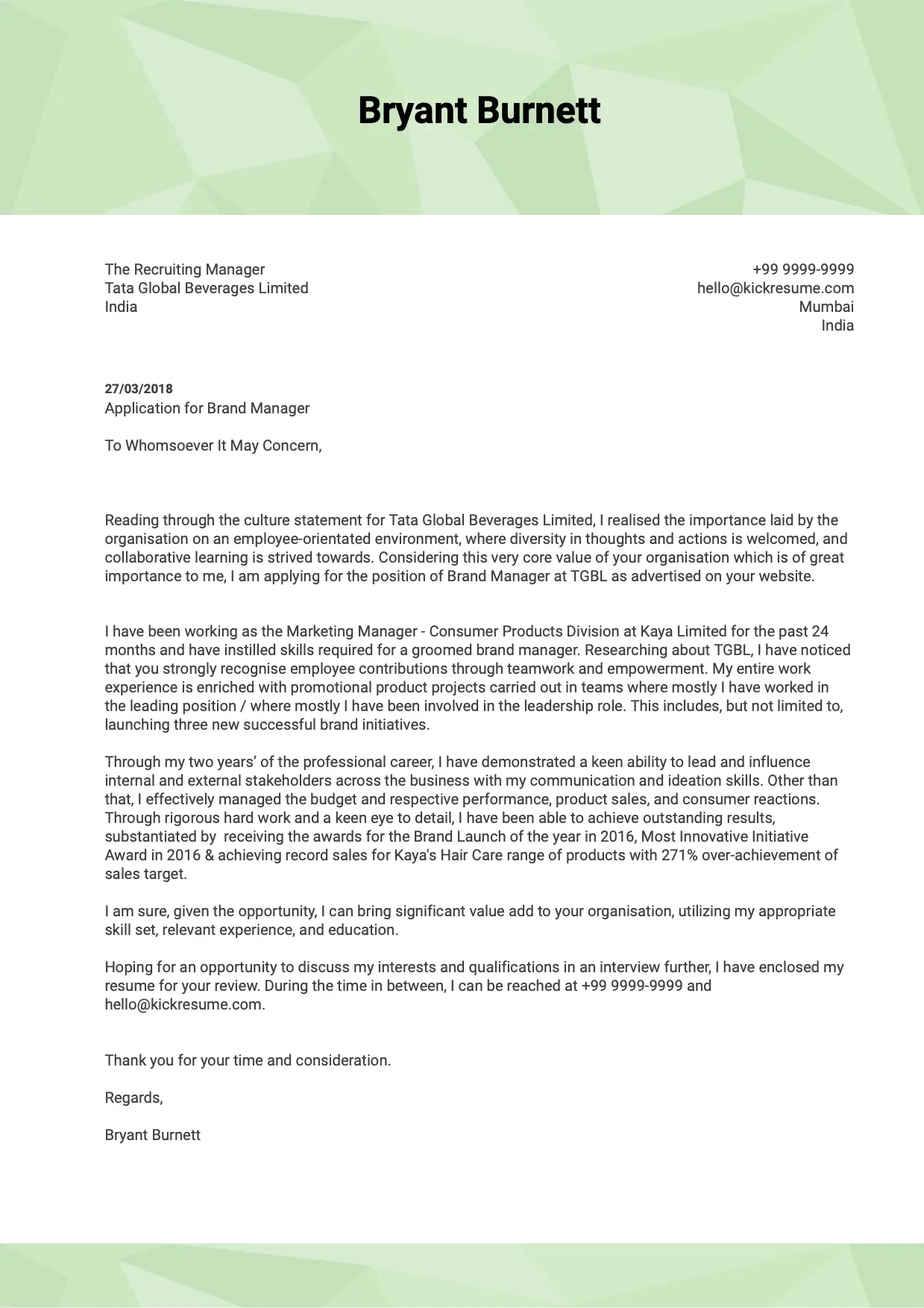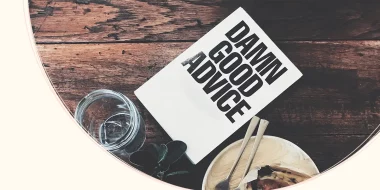Here's an idea: the resume vs cover letter is a lot like salt vs pepper. Let me explain.
Your resume is like salt — it's a key ingredient required to prepare any dish. Or in this case, to score a job.
The cover letter, on the other hand, is like pepper — you use it to give your dish (your resume) a bit more flavor.
But in the end, salt and pepper work best when used together. Because of that, it might seem a bit silly to compare the two. Let's do it anyway!
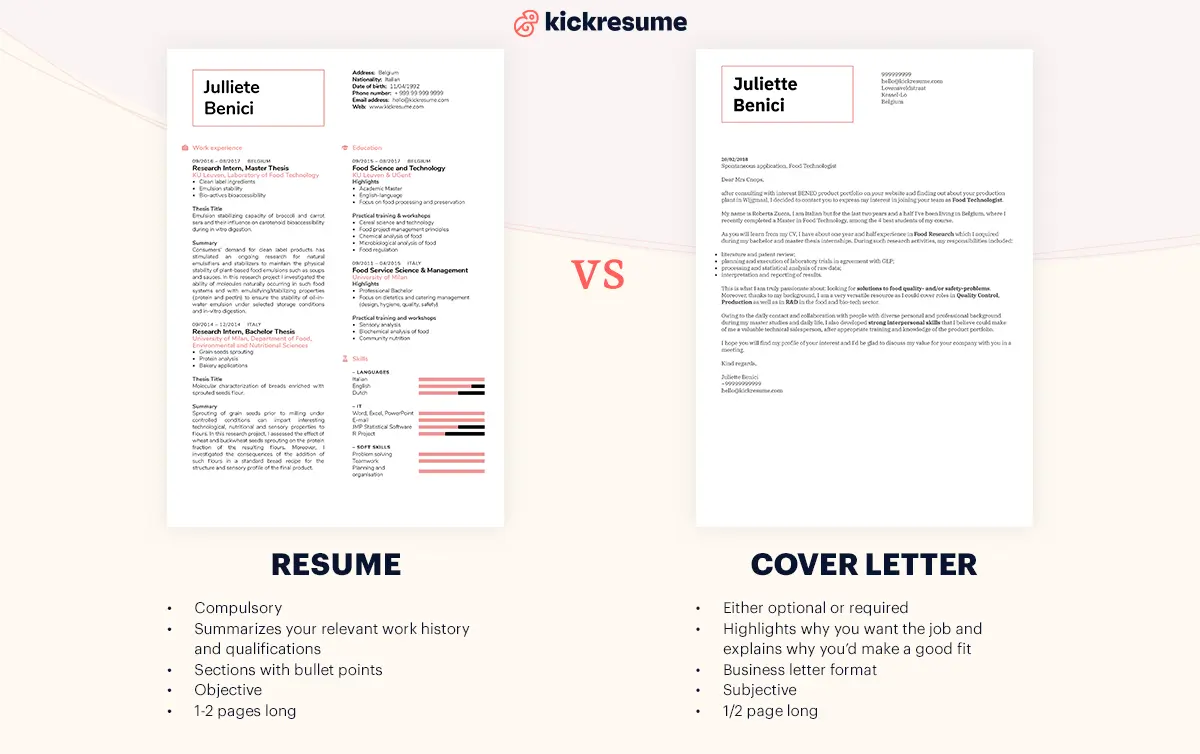
Let’s start with an infographic that shows the key differences between the two.
What is a resume?
Resume is the most common career document that job seekers use. If you’re going to apply for a job, you'll be required to provide one.
In the simplest terms, the resume is a concise summary of your education, work history, skills, credentials and achievements. It gives hiring managers a rough idea about who you are as a professional, what’s your work history and your key achievements.
It’s usually one page long and written in chronological order.
But in general, you have three options to choose from — besides chronological, there’s also functional or hybrid resume format. It’s up to you to figure out which one works the best for you.
What should a resume include?
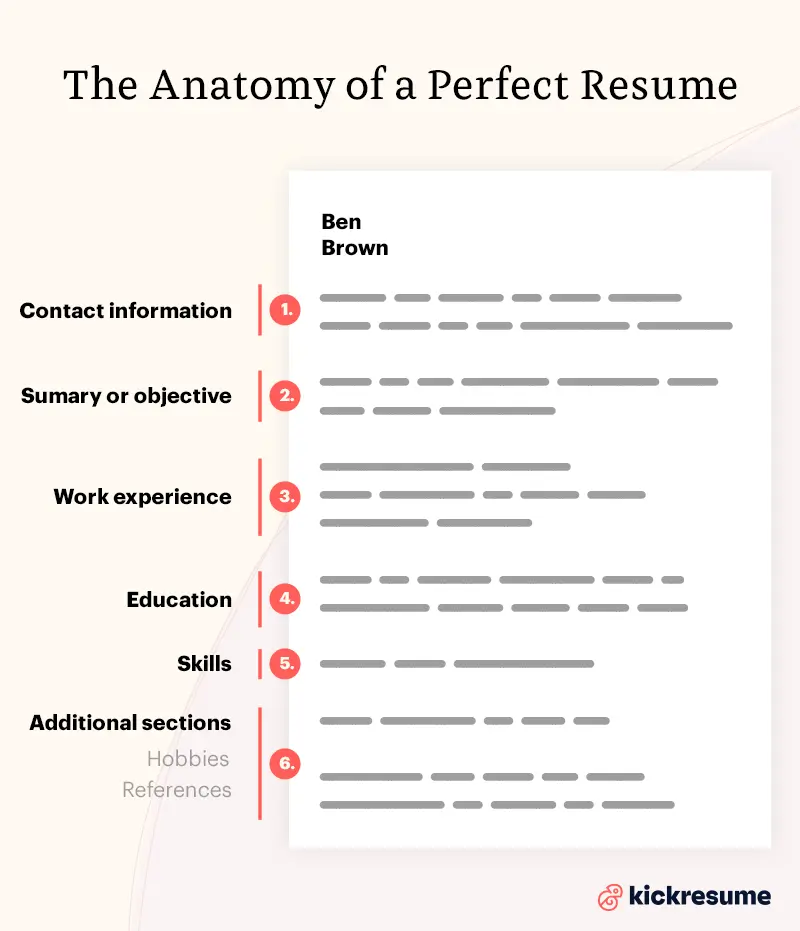
- Contact information: Your resume should begin with your contact details. Add your full name, title, address (optional), email address and phone number. In some countries, it's also common to include birthdate, nationality and photo.
- Professional summary or resume objective: Describe yourself in three sentences. Open with your job title and highlight your key skills and qualifications.
- Work experience: The most important part of your resume. List relevant work history in reverse chronological order. Add 3-5 bullet points under each entry to describe your key achievements.
- Education: If you’re a seasoned professional, it’s enough for you to mention your highest degree and school name. If you’re a student or a fresh graduate, feel free to include more details like relevant coursework, grants, or extracurricular activities.
- Skills: Pick relevant skills and divide them into several subsections like computer skills, soft skills, languages, and others.
- Additional sections: Certifications, courses, awards, strengths, publications, conferences, hobbies, social media, references, etc. All of these are voluntary.
If you're not sure what to write in specific sections of your resume, you can just check our step-by-step resume guide.
But if you prefer watching videos to reading, you might also like this 5-minute video guide to writing the perfect resume.
What is a cover letter?
Also something that you use to help you get a job… But!
Firstly, it's not always required.
Secondly, even if it is, it only provides additional information to your resume and should never repeat the same content.
It allows you to explain other things that are impossible to express through the resume, such as:
- explanation why you’re applying for the position
- supporting evidence to why you’d make a good fit
- examples how you can be beneficial to the company
- details about employment gap or less work experience
- your personal story
- your motivation and ambitions
You normally attach it along with your resume and it serves as your introduction to a hiring manager. The ideal cover letter length is 3-4 paragraphs.
What should a cover letter include?
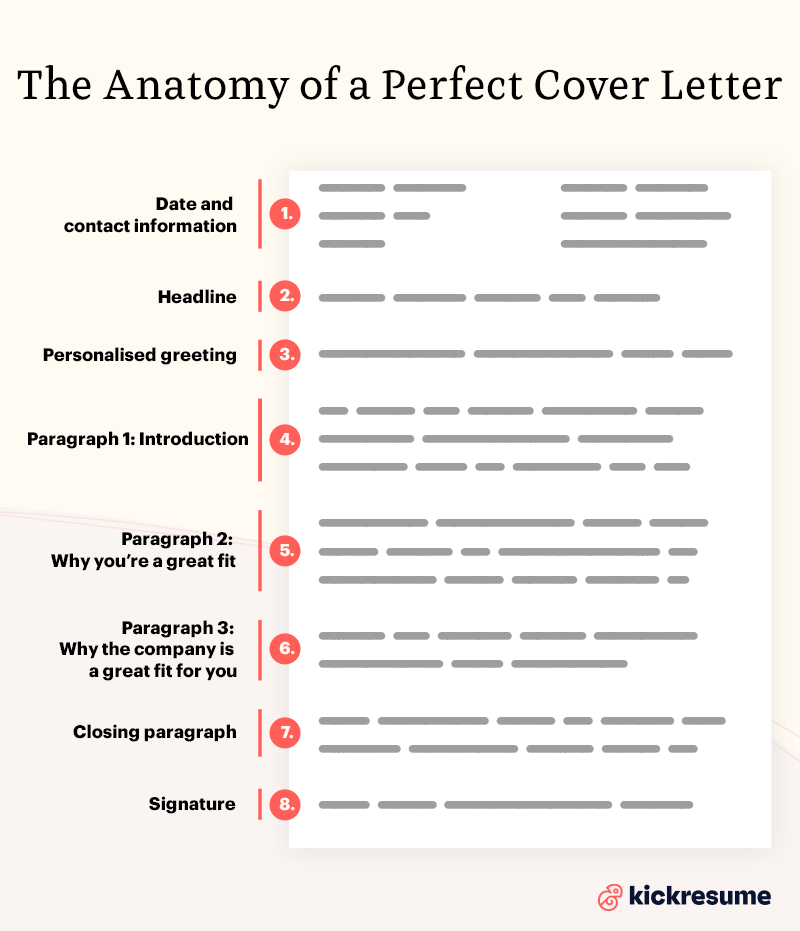
- Date and contact information: List your contact details such as full name, title, email, phone number, address (optional), and the date at the top of the page. Also, add company’s information such as name of the company, department and address.
- Headline: Use numbers, questions, or interesting adjectives. Something like "5 Ways I Can Help You Improve Your Company’s Marketing."
- Personalized greeting: Research the hiring manager's name online — LinkedIn is the perfect tool for this. If you fail to find it, use “Dear Sir/Madam”.
- 1st Paragraph: Introduction: Use this space to introduce yourself in more detail and explain why this job is exciting to you.
- 2nd Paragraph: Why you’re a great fit: Write a short summary of your career and skills, and tailor it to fit the company's needs.
- 3rd Paragraph: Why the company is a great fit for you: Let them know why do they appeal to you. What excites you about working there? What do you want to learn?
- Closing paragraph: Finish strong and repeat why you’re a great fit (points 5 and 6). Also, explain how and when you’re going to contact them.
- Signature: Use a formal sign-off like "Yours faithfully" (US English) or "Yours sincerely" (British English) + your full name.
Take the readers on an exciting journey, don't tell them what they already know! Just try to answer the basic questions: Why you? Why this company? Why this role?
7 differences between the cover letter and resume
| Resume | Cover Letter | |
| Type of document | compulsory | either optional or required |
| Purpose | provide information about your work history and qualifications | introduce yourself and convince the hiring manager you’re the right fit for the position |
| Content | summary of skills, work experience, education and accomplishments | key qualifications you have for the specific job, background info |
| Information | objective facts | subjective interests, motivations and ambitions |
| Format | multiple sections with bullet points | letter with 3-4 full paragraphs |
| Tone | professional | more conversational |
| Length | usually 1-2 pages | usually 1/2 page |
Type of document: When you’re applying for a job, you're normally asked to provide a resume. That’s a basic document hiring managers use to filter job candidates. On the other hand, cover letters, while often required, are sometimes optional. This depends on the requirements for the specific job.
Purpose: The purpose of your resume is to summarize your work history and qualifications. Whereas the main purpose of your cover letter is to sell those qualifications. It should introduce yourself to the hiring manager and show how your experience and skills make you a great match for the job.
Content: Your resume should contain key information about your work history and professional background. A cover letter should help the hiring manager to interpret that information. For instance, you may have an employment gap on your resume and in your cover letter, you can explain why.
Information: Any resume is mostly about facts. In contrast, your cover letter should contain more subjective information, such as reasons for applying for that job, why you’re passionate about your industry or why you’d make a good fit. It’s a place where you can show a bit of your personality.
Format: A resume is divided into multiple sections like Work history, Education, Skills, etc. and should use bullet points under each section. On the other hand, a cover letter is written in a letter format and consists of 3-4 full paragraphs. It includes heading, salutation, introduction, body content, conclusion, and your signature.
Tone: Resumes have more professional and formal tone. In your cover letter, you can use a more conversational tone and give it a more personal touch. This goes hand in hand with the fact that resumes are rather objective and cover letters subjective.
Length: Your resume should be one page long. This of course, depends on where you are in your career. But your cover letter should never go past 3/4 of a page (no matter what your career level is).
How cover letter and resume complement each other
Although there are multiple differences between the two, they complement each other.
Simply put — think of your resume as an outline for your cover letter story.
Along the similar lines, you can also think of your cover letter as a handbook to your resume. It allows you to translate raw data from your resume into an easy-to-read letter demonstrating your key skills and abilities. Ultimately, the purpose of your cover letter is to get your resume read.
They should also complement each other in the terms of design. Make sure your cover letter template matches the resume template you chose. It makes you look more professional. (For instance, Kickresume allows you to do that.)
In the end, both documents will give you a chance to deliver your “elevator pitch” and help you score a job interview.
Cover letter and resume examples
Let’s now take a look at how it should be done in practice. Below you can find a resume and cover letter example written by a real job seeker who scored a real job in a real company (it's all very real, true story).
These examples can teach you a bit about content and style of your resume and cover letter. You can even use them as your first drafts to help you get started.
Still need some more inspiration? Visit our resume examples and cover letter examples libraries.
You can even transform your LinkedIn profile into a polished, professional resume. Our tool streamlines the process, helping you create a compelling document that perfectly showcases your skills and experience.
